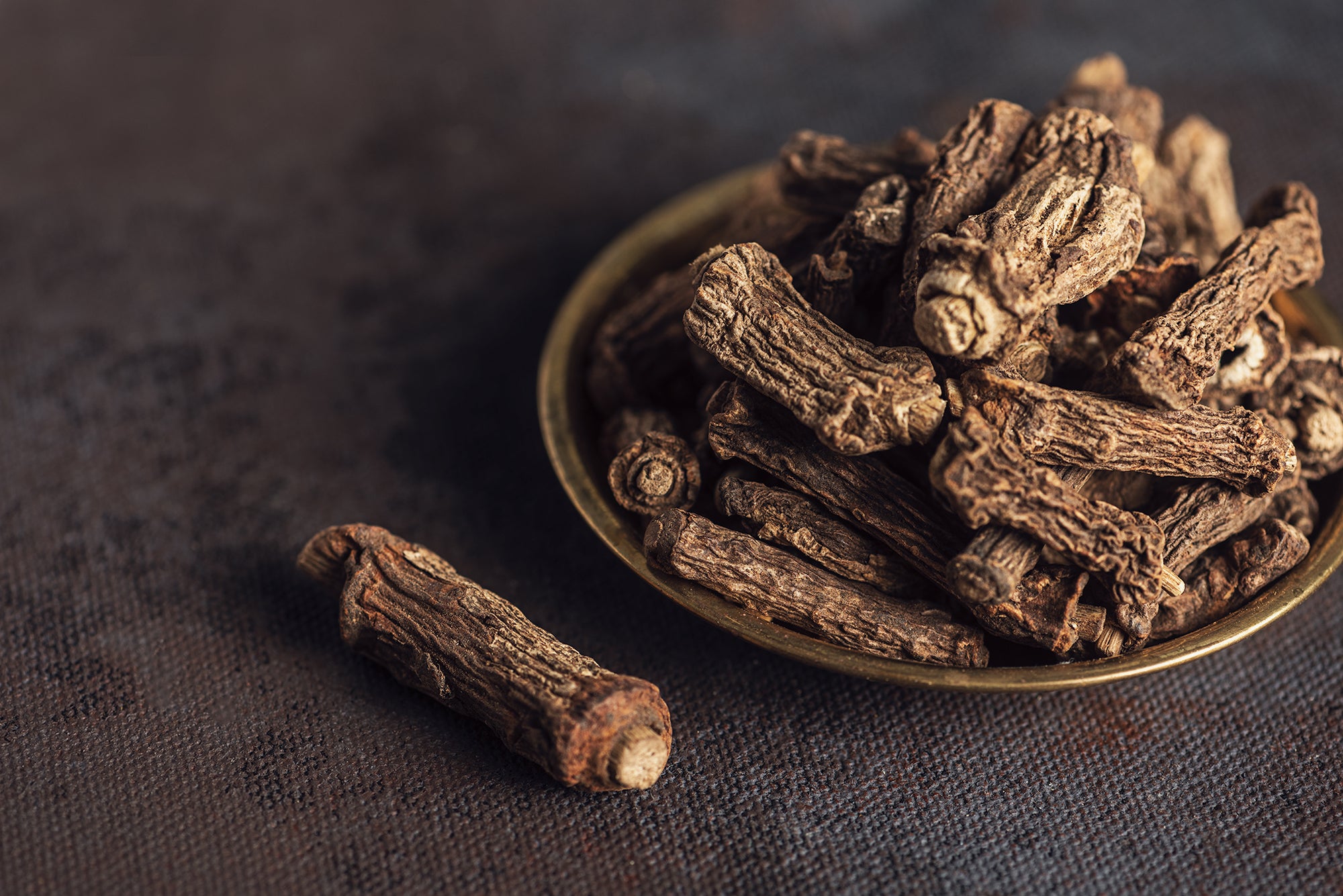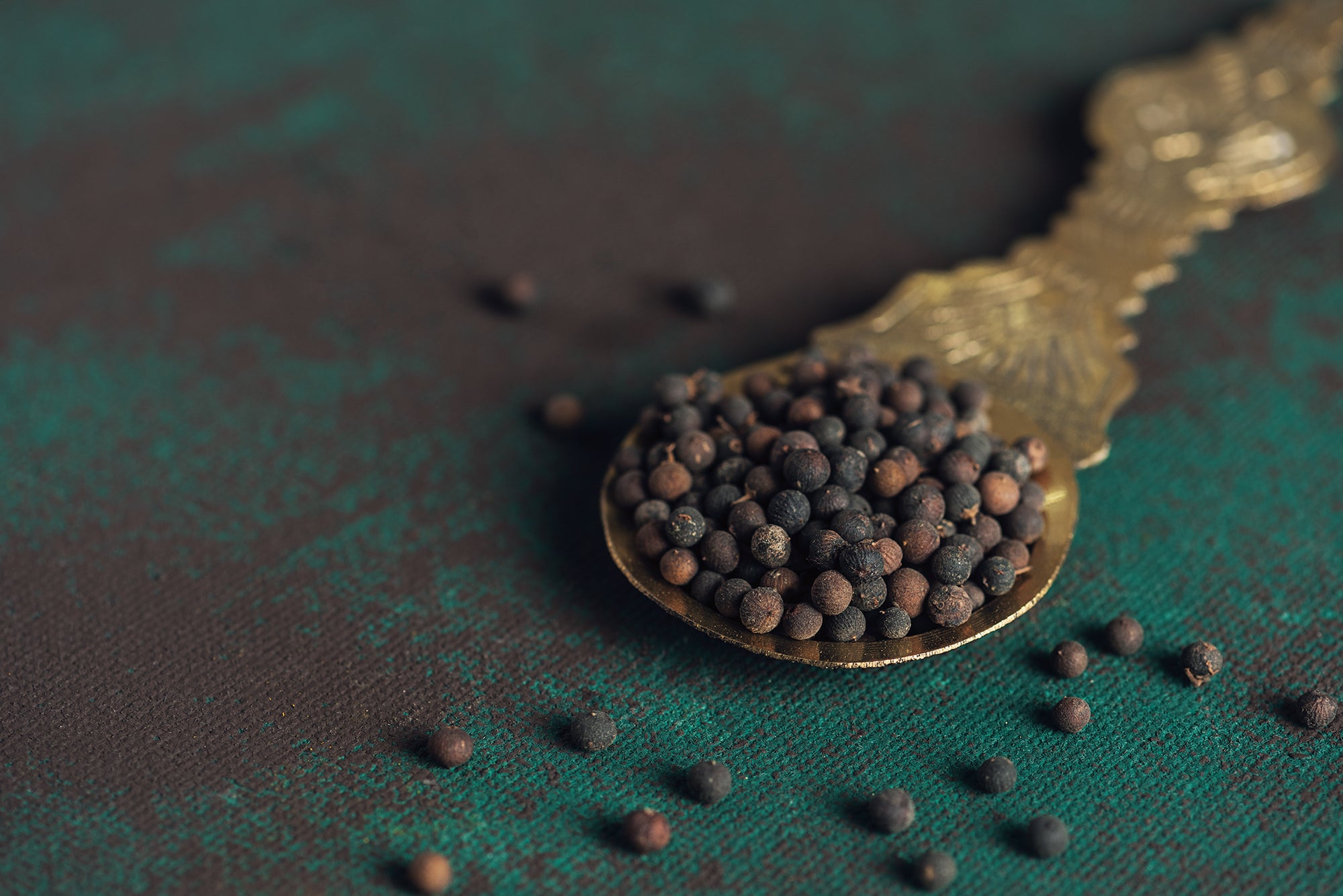Also known as Pippali, Indian Long Pepper is a unique spice to have in your spice box. It has a complex flavor, fruity with hints of nutmeg, cardamom and cinnamon.
Though not as famous as its close relatives – black and white round pepper, it’s packed with flavor, nutrients and compounds making it equally if not more essential to use.
Growing The Indian Long Pepper
Indian long pepper, as the name suggests is indigenous to the Indian subcontinent. Though mostly derived from wild plants, it is also grown in small areas in the lower hills of West Bengal, the Khasi hills, Eastern Uttar Pradesh,Madhya Pradesh, Maharashtra, Kerala, Karnataka and Tamil Nadu.
The fruits and the roots of this plant are commonly consumed. Its leaves are about 5-9 cms long and about 5 cms wide. The flowers are cylindrical and short and produces multiple fruits. These fruits are shining dark green in color when immature and turn blackish green in color once fully matured.
For growing long pepper the vine cutting needs to be rooted in polythene bags filled with pot mix. They are usually planted in the nursery in March-April and then planted in the main field by May.
The plant requires a hot, humid climate. Though it thrives well in a variety of soils, light porous well drained soil with high organic content is highly optimum for them.
Peppered With Goodness
The Indian long pepper is packed with an arsenal of health benefits. Unlike other spices this one is more beneficial to your health when unripe. Once plucked it is dried under the sun in partial shade and then used.
It is rich in alkaloids and analgesic. It also has a ton of glycosides, resins, sugar, saturated fat and more.
Long pepper contains a chemical known as piperine, which helps fight parasites and other infectious agents in turn helping keep the liver free of toxins and preventing stomach related issues. Long pepper has also proven to help lower the blood sugar levels.
It is also used to aid weight loss, help get relief from breathing problems and regulate menstrual cycles.
Indian Long Pepper And Ayurveda
Pippali, as it is most commonly known in Ayurveda has a host of uses. It is a tridoshic herb and is suitable for all body types.
Used as a herb and a culinary spice, long pepper is not only useful to treat digestive issues but also give relief from cold, congestion, reproductive issues, stress and other related issues.
This pepper can be consumed by adding to any of your savory dishes. You can also make a healing brew by combining this with turmeric, ginger and honey for getting relief from allergies or flu. A combination of fresh aloe vera and long pepper is good for hormonal balance, in turn regulating the menstrual cycles and helping maintain clear skin.
This herb is highly potent and should be consumed in small dosages.
We have used Indian Long Pepper in:
Quick Facts
| Name: | Indian Long Pepper |
| Scientific Name: | Piper Longum |
| Cultivated in: | All over India |
| Other names: | Long Pepper, Pippali, Pipli |
| Habitat | Hot and Humid |
| Soil | Thrives in variety of soils |
| Plant Size | Leaves: 5-9cm, Flowers: 1.25 – 7cm |
| Aroma | Mild Spicy |
| Plant parts used | Fruits, Roots |
| Major Nutrients | Piperine Resins Sugars Eugenol Myrcene Volatile Oils Saturated fats Essential oils |
Known As In
| Hindi | Pipli |
| Konkani | Pipli |
| Marathi | Pimplli |
| Gujrati | Pipari |
| Telugu | Pippalu |
| Urdu | Pipal |
| Malayalam | Tippali |
| Tamil | Tippili |
| Kannada | Kandan Lippili |





.png?v=1668878203)



